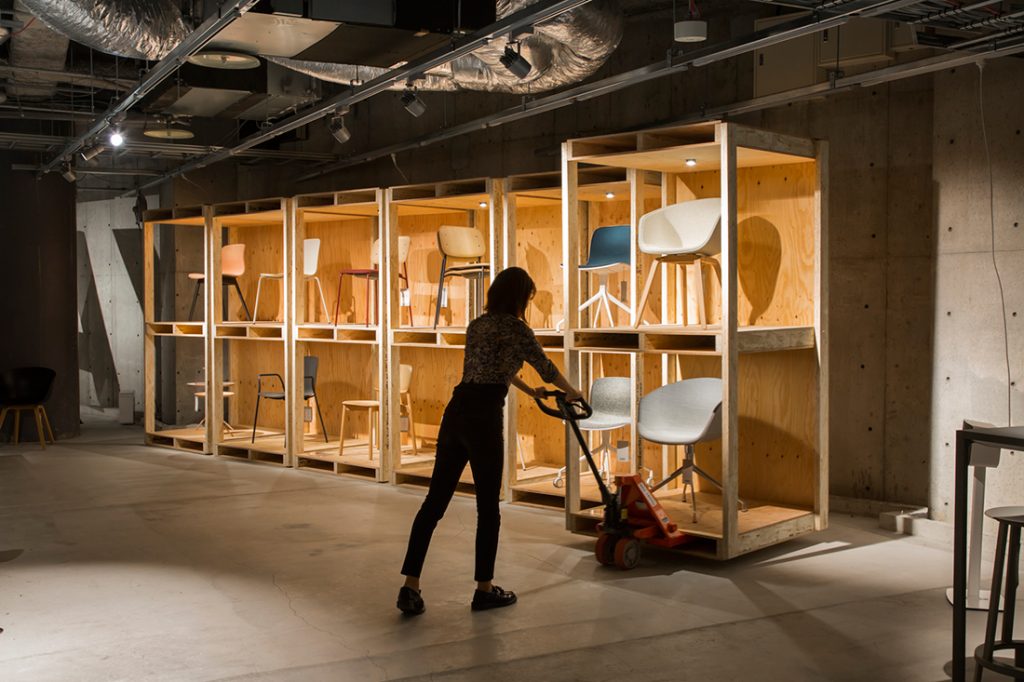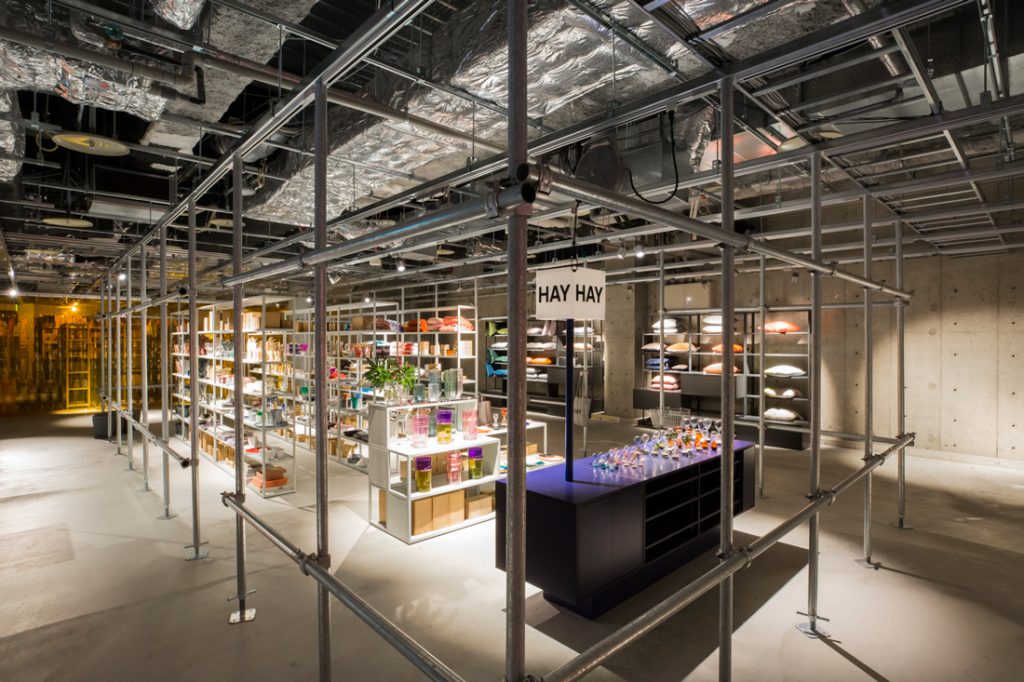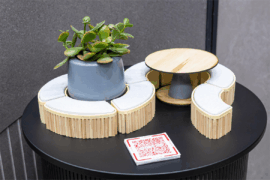Incorporating ‘moveable interfaces’ and display systems into its design for HAY Tokyo, Schemata Architects has allowed the temporary store interior to move and grow as its needs change.
A subterranean space is making its presence felt at street level in Shibuya-ku. Vivid pink spray paint coats a stairway and creeps antagonistically up the surrounding glass balustrade – an unexpected marker of something unconventional happening below.

“Instead of guiding people using signs in Omotesando, a district already overloaded with signs, we decided to draw people’s attention by doing something we are not supposed to do in this city – that is, to vividly spray-paint the entire stairway and the existing walls around it,” explains Jo Nagasaka of Schemata Architects.
The stairway is soon to be demolished and the surrounding building renovated, so the unusual invitation to the basement found fruition and now brings attention to a spot that had previously been barely noticed.

It descends to a temporary store for the dynamic Danish furniture and product brand HAY, where Nagasaka has created an adaptable display system that can grow and change as the retail program requires.
“The space consists of what we call ‘interfaces’ or movable furniture systems instigating people’s activities,” says Nagasaka. “These ‘interfaces’ are something between architecture and furniture: they are furniture systems that can be moved only by store administrators who know the mechanism of each system.”

One of the ‘interfaces’ is a wall system composed of overhead channels perforated every 1,200mm along their entire length. Wall panels can be attached with the support of steel pipes fixed to the overhead framework. The channels carry wiring for the lighting as well as power-supply cables that reach down to the floor level.

The other ‘interface’ is a series of furniture pieces. “They are too heavy to lift manually but can be moved by one person using a hand lift,” explains Nagasaka. They include cash register counters, chair display shelves, and plant boxes. The performative aspect of moving these elements adds to the store experience.
Aside from the café area, the store interior can be entirely cleared overnight. This makes it possible to respond to specific requests, explains Nagasaka, such as the need to clear half the space so a live performance can be accommodated. “Naturally, the store layout can be easily modified in the same way according to market trends on a daily basis,” he says. “These ‘interface’ systems allow the store to expand through collaboration with various designers throughout the year.”

–
Get more retail design inspiration, take a look through our archives here. And join our mailing list for all the latest news and updates.
INDESIGN is on instagram
Follow @indesignlive
A searchable and comprehensive guide for specifying leading products and their suppliers
Keep up to date with the latest and greatest from our industry BFF's!

Welcomed to the Australian design scene in 2024, Kokuyo is set to redefine collaboration, bringing its unique blend of colour and function to individuals and corporations, designed to be used Any Way!

From the spark of an idea on the page to the launch of new pieces in a showroom is a journey every aspiring industrial and furnishing designer imagines making.

Seven years in the making, the new Surry Hills Village is here with doors open and crowds gathering.

Inside Bangkok’s Siam Paragon Mall, L’Atelier by Dinding Design Office celebrates the artistry of independent watchmaking through a space defined by light, craft and meticulous detail.
The internet never sleeps! Here's the stuff you might have missed

ownworld unveiled Silent Beams in its Collingwood showroom, marking the arrival of Swedish lighting brand Wästberg through a new partnership with Euroluce.

Recognised as winners at the INDE.Awards 2025, Enter Projects Asia in collaboration with SOM have received The Influencer award. Their work on Terminal 2 Kempegowda International Airport Interiors redefines the aesthetics of airport design through a monumental expression of biophilia, sustainability and craftsmanship.

Central Station by Woods Bagot in collaboration with John McAslan + Partners has been named one of two joint winners of The Building category at the INDE.Awards 2025. Recognised alongside BVN’s Sirius Redevelopment, the project redefines Sydney’s historic transport hub through a transformative design that connects heritage with the demands of a modern, growing city.